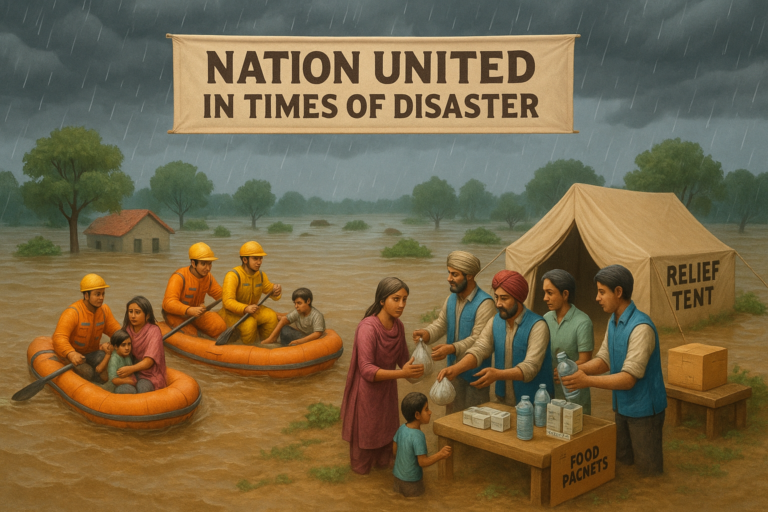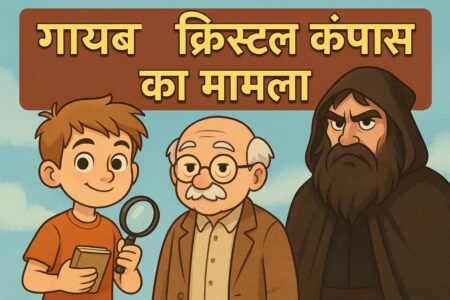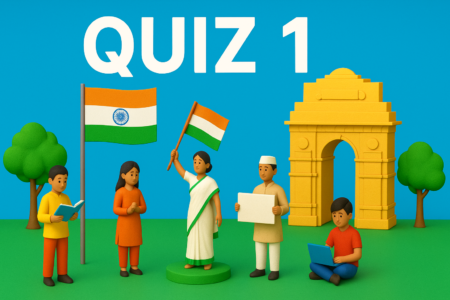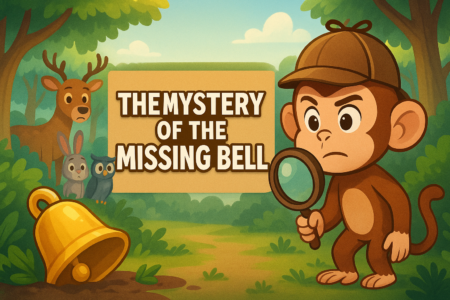Introduction
Disasters do not knock on our doors before they arrive. Whether natural or man-made, they strike suddenly and leave behind pain, loss, and destruction. In such times, the true strength of a country lies not only in its resources but also in the unity of its people.
The recent monsoon floods in Punjab, Jammu & Kashmir (J&K), Uttarakhand, and nearby states remind us of this truth. Rains that were expected to bring relief and prosperity instead caused devastation. Villages were submerged, crops destroyed, and thousands of people displaced. At such moments, a unified national response becomes the need of the hour.
The monsoon of 2025 has been one of the most destructive in decades for North India:
- Punjab: More than 1,900 villages were flooded across 23 districts. Over 3.9 lakh people were affected, and 48 lives were lost. Farmlands covering 1.75 lakh acres were submerged, and nearly 5 lakh trees were uprooted.
- Jammu & Kashmir: Flash floods and cloudbursts swept through parts of Rajouri, Poonch, and Anantnag districts. Dozens of families were displaced, roads washed away, and critical bridges collapsed, cutting off essential supplies.
- Uttarakhand: Known as the “Devbhoomi,” Uttarakhand faced destructive floods and landslides. Kedarnath, Chamoli, and Rudraprayag witnessed road blockages, temple routes damaged, and villages evacuated. Pilgrims and tourists were stranded, highlighting the vulnerability of hilly terrains.
- Haryana: Overflowing rivers like the Yamuna caused flash floods, damaging homes and fields.
- Himachal Pradesh: Heavy rains triggered landslides, collapsing roads and cutting off towns.
These disasters show how different states, though geographically apart, share the same vulnerability when nature turns extreme.
Why National Unity is Important During Disasters 🇮🇳
- Shared Responsibility – A disaster in Punjab, J&K, or Uttarakhand is not only their problem; it affects the nation’s food supply, tourism, economy, and environment.
- Stronger Relief Operations – Unified efforts from government, NGOs, armed forces, and citizens can speed up rescue and rehabilitation.
- Emotional Support – People in disaster-hit areas feel stronger when the entire nation stands with them.
- Resource Sharing – States with more resources can support those that are struggling, ensuring no community is left behind.
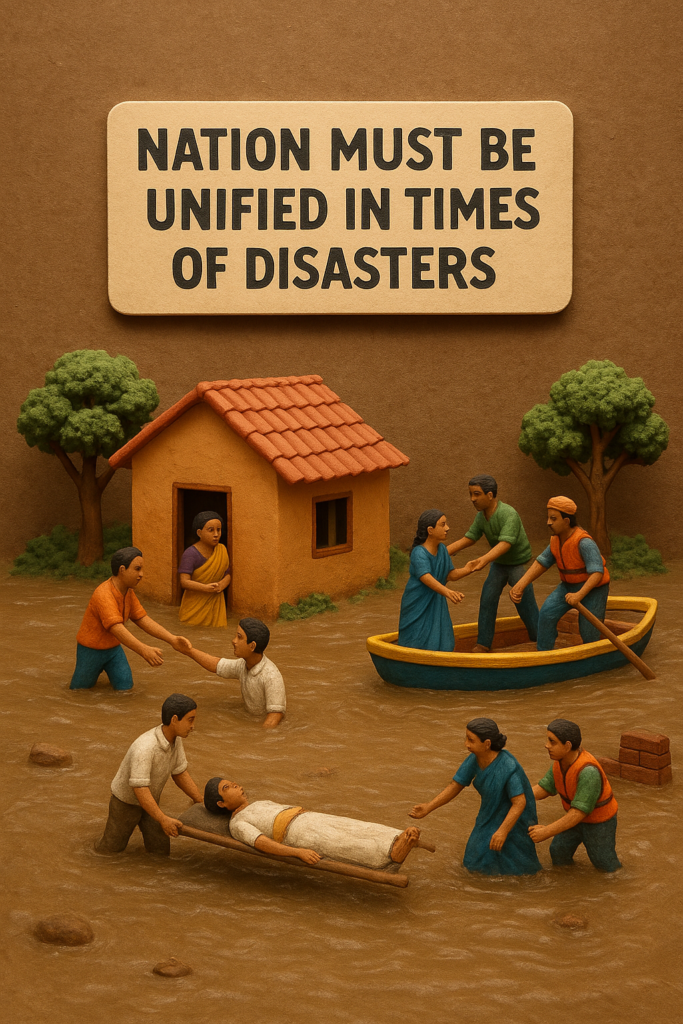
Examples of Unity During Recent Floods 🤝
- Relief Camps: Citizens, volunteers, and organizations distributed food, medicines, and clean water in Punjab, J&K, and Uttarakhand.
- Rescue Operations: NDRF, Army, and local authorities worked day and night to save stranded families across multiple states.
- Community Efforts: Milk cooperatives like Verka in Punjab, local NGOs in J&K, and temple committees in Uttarakhand provided essentials to victims.
- Nationwide Support: Volunteers across India sent boats, rations, blankets, and mosquito nets—proving that compassion has no boundaries.
Such examples prove that when the nation comes together, the impact of disasters can be reduced.
Lessons for the Future 🌱
- Disaster Preparedness: Building stronger flood-control systems, safe evacuation routes, and early warning networks.
- Environmental Protection: Planting trees, conserving rivers, and stopping illegal constructions in flood-prone areas.
- Community Awareness: Educating people about safety measures during floods, landslides, and cloudbursts.
- National Solidarity: Remembering that unity is our biggest strength in times of crisis.
Conclusion ✨
The floods in Punjab, Jammu & Kashmir, Uttarakhand, and nearby states are not just a reminder of nature’s power but also of the power of unity. Disasters may destroy houses, farms, and roads, but they cannot destroy the spirit of people who come together as one nation.
In times of crisis, unity becomes our biggest shield. As responsible citizens, we must remember:
👉 A united nation can rebuild faster, recover stronger, and rise higher from any disaster.

